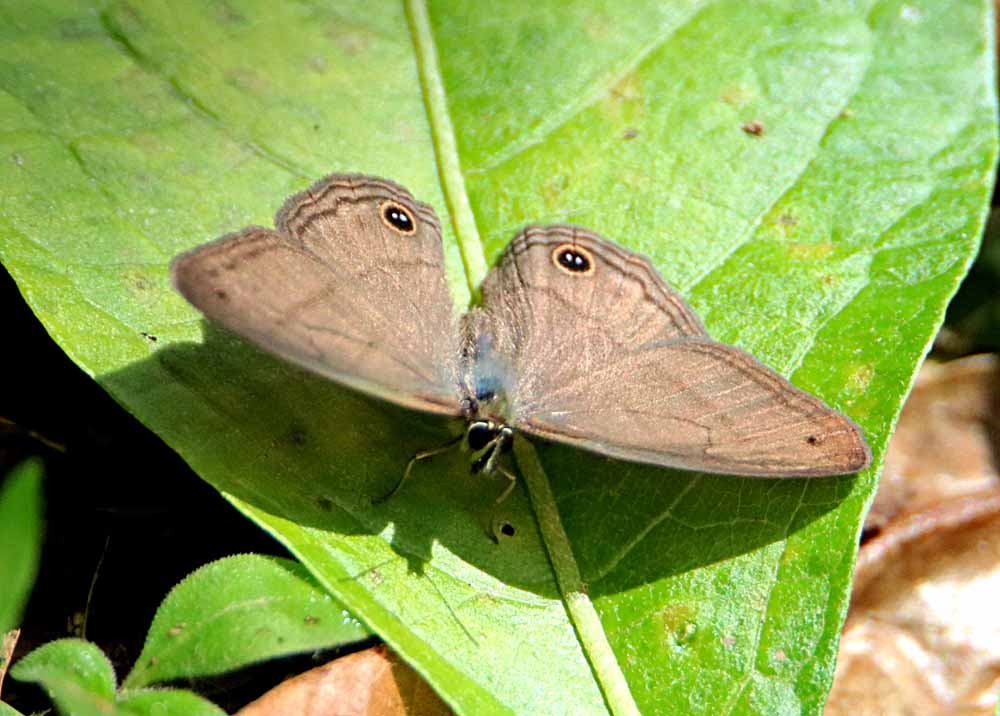The Tropical Checkered Skipper, Burnsius oilius (my gallery), is found from the southern U.S. Gulf Coast south through Central America to Argentina. Here’s some recent shots from my garden . . .
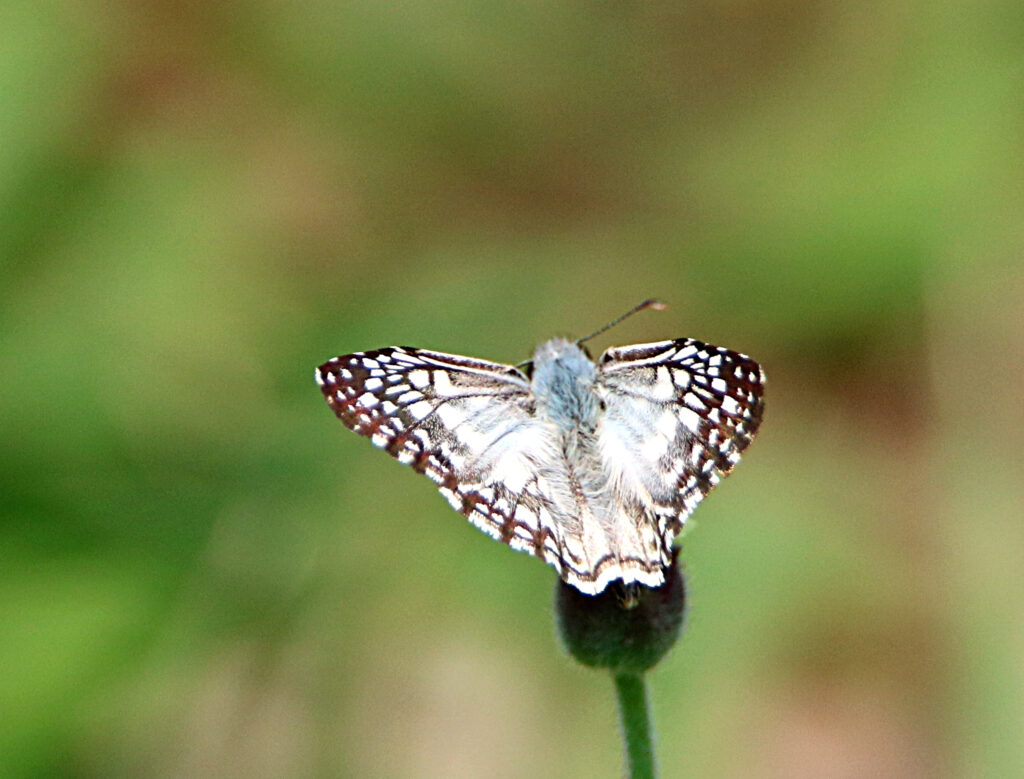
The Tropical Checkered Skipper, Burnsius oilius (my gallery), is found from the southern U.S. Gulf Coast south through Central America to Argentina. Here’s some recent shots from my garden . . .

One of my regulars at home, but haven’t shared one in awhile! 🙂 Here’s 3 views of this tiny thumbnail-sized butterfly in my garden . . .
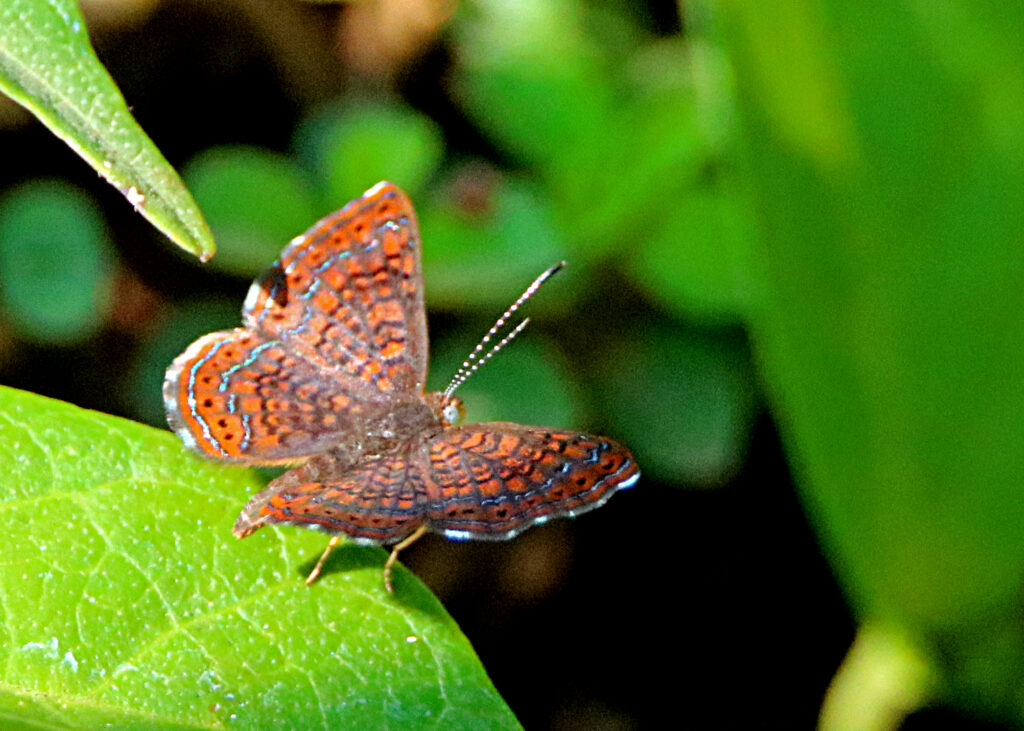
When I first came to Costa Rica, I had trouble identifying this species, but I’m relatively certain now, with specific characteristics: Turquoise tips on their antennae, yellow spot behind each eye and at joint of each hind wing, bluish-gray body, plus the dark brown or black “arrow-head” trim on the forward wings. The males are otherwise solid white while the females have a slight brownish hue to the white. You can see the differences in my Great Southern White Gallery. These photos are of a male. To help you see all the characteristics, I’ve included here from a recent sighting in my garden, 3 views: Top of wings, bottom of wings and a folded wings side view, the three views I try but seldom get when photographing all butterflies. 🙂
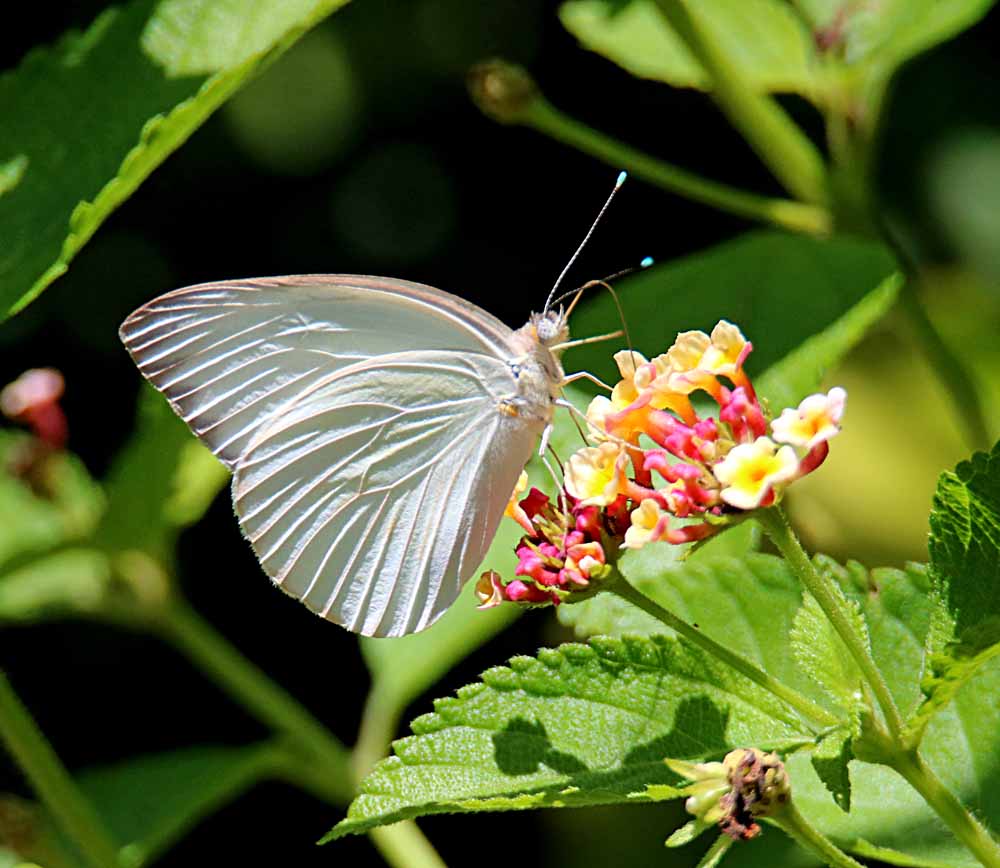
Not your everyday dragonfly! But my second time to see a Black-winged Dragonlet, Erythrodiplax funerea (linked to my gallery & the other photo made at Banana Azul in the Caribbean).
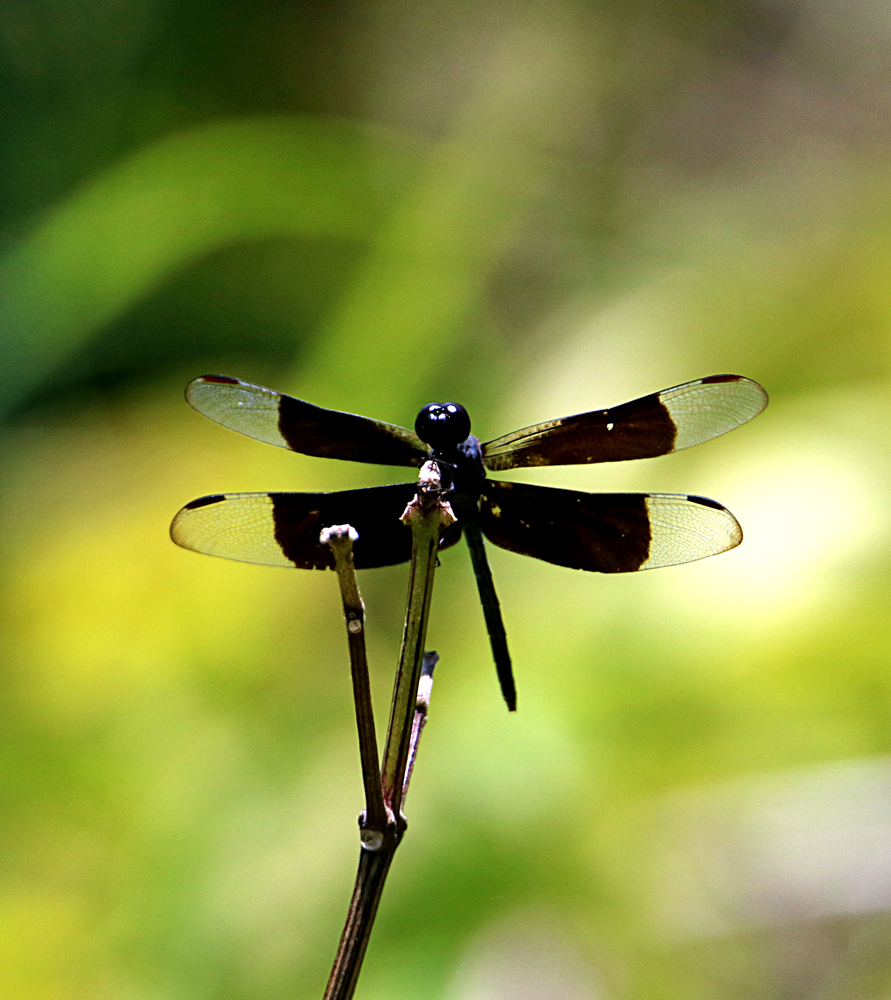
¡Pura Vida!
This is a first sighting for me of the Heliopetes arsalte, Veined White Skipper (linked to butterfliesandmoths.org) or you can see more shots from this sighting in my garden in my own Veined White Skipper Gallery. Here’s 3 different views of this butterfly . . .
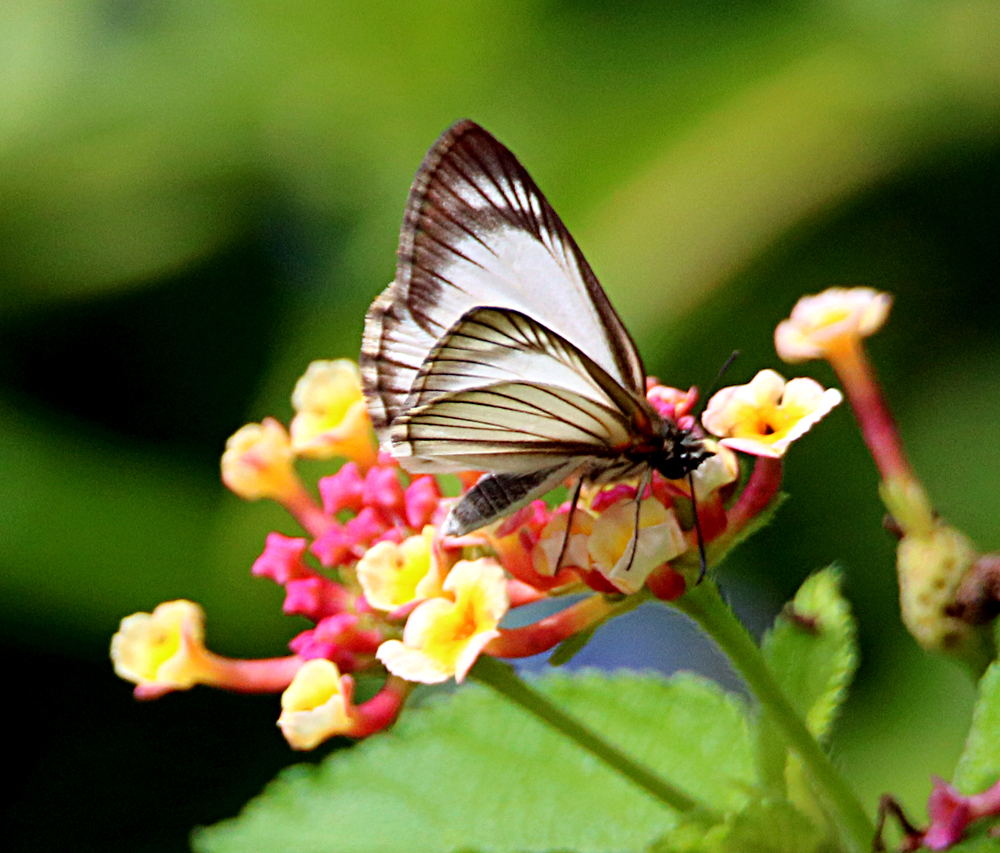
Walking back home from “Central” (what they call “downtown” here) along 8th Avenue in Barrio Boquerón, there were two bright orange butterflies that I thought were the same species, but later evaluating my cell phone photos of them on the computer, I realized the differences in the two species and my photo collection of 2 previous Daggerwings just doubled to 4! 🙂 Here’s one photo of each and you can go to my galleries to see the other shots, including one of the two together which is also the feature photo at top . . .
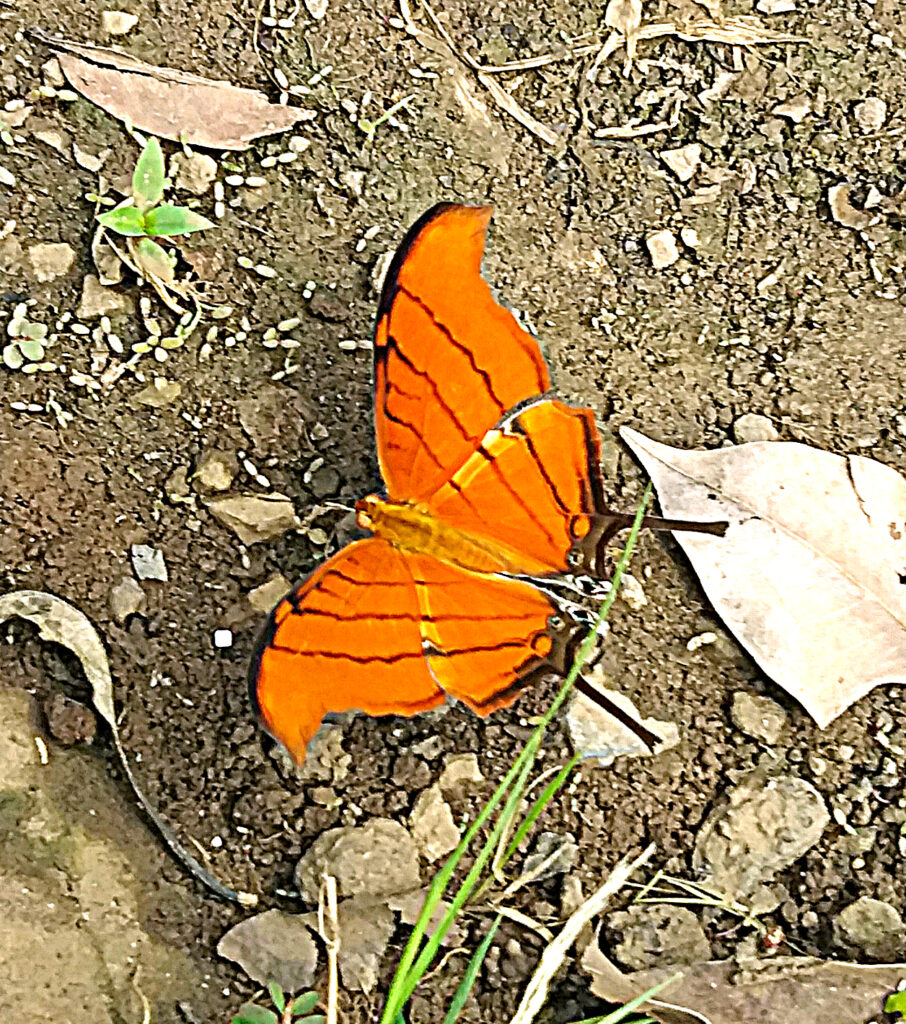
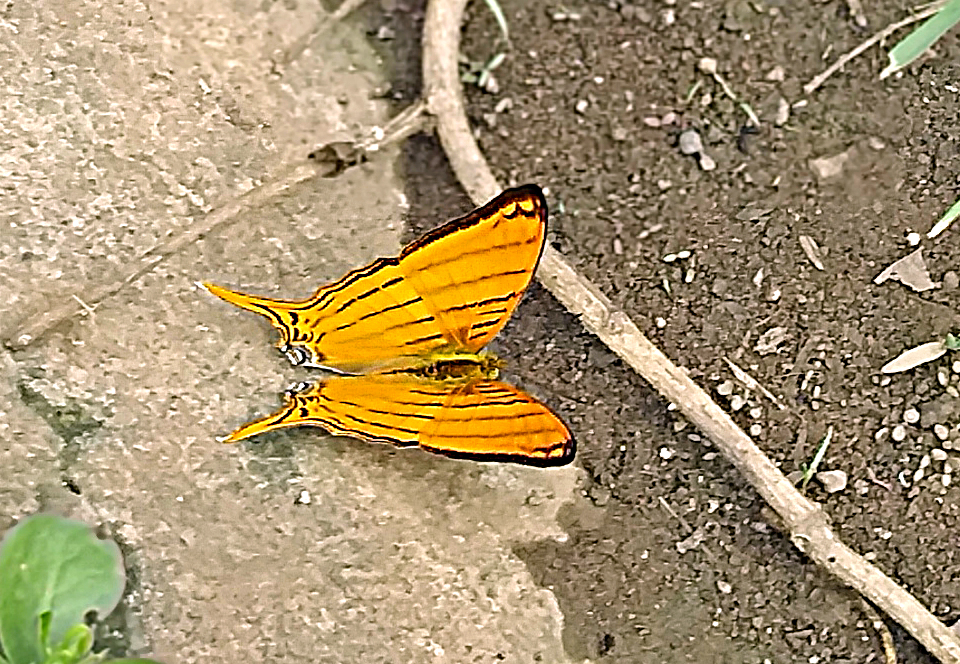
And oh yes, those other two Daggerwings I photographed away from home on two different rainforest trips (1 north & 1 south) . . .
No end to cool butterflies here! 🙂
¡Pura Vida!
These four shots from my garden are all of a female who is the one with the brown trim on top of wings, while males are generally all yellow and easy to confuse with other yellows, especially if they have spots. 🙂 They are Dina Yellow, Pyrisitia dina, (linked to my gallery of them).
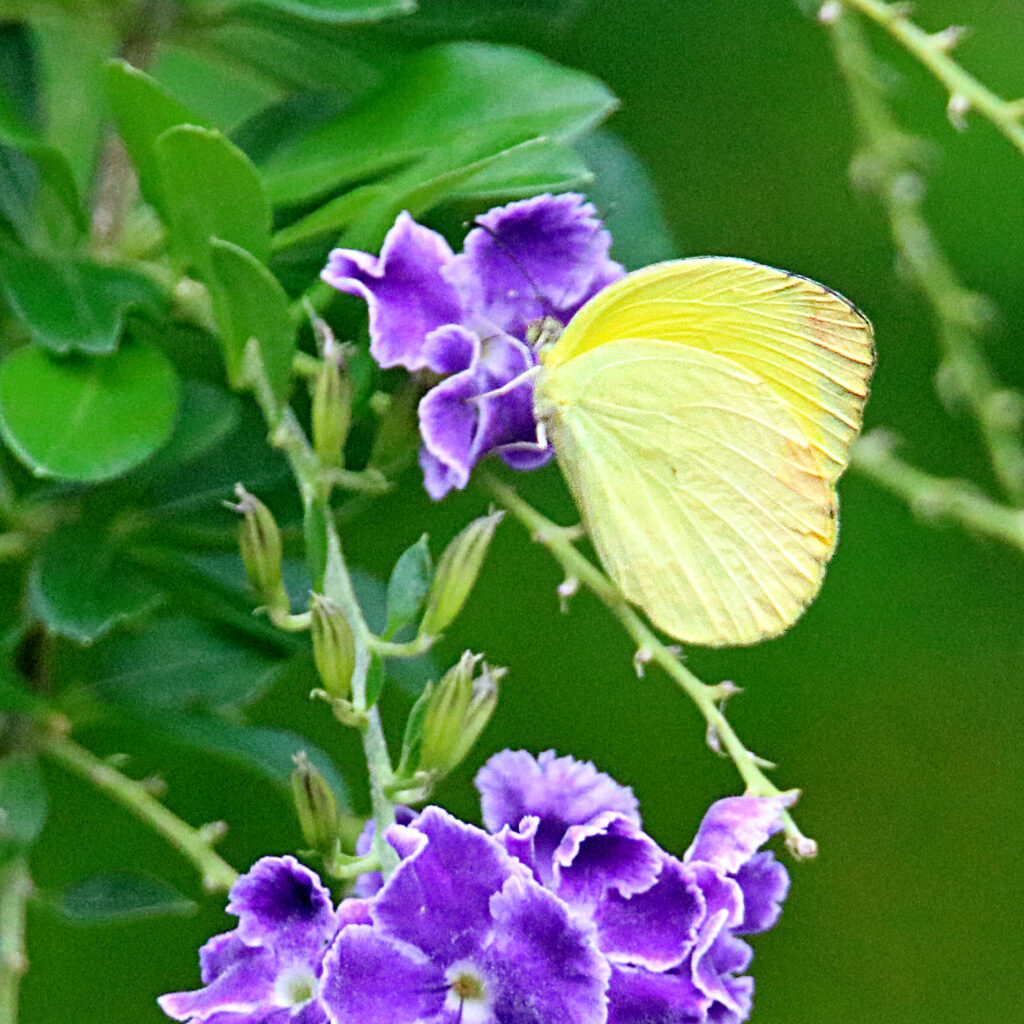
Another beautiful tropical butterfly that I first met in the Florida Everglades years ago, though a slightly different subspecies. This one found in Costa Rica is the Tropical Buckeye, Junonia evarete, (linked to my gallery) appearing from Florida & the Southwestern U.S. all the way down to Argentina. Here’s some recent shots of one in my garden . . .
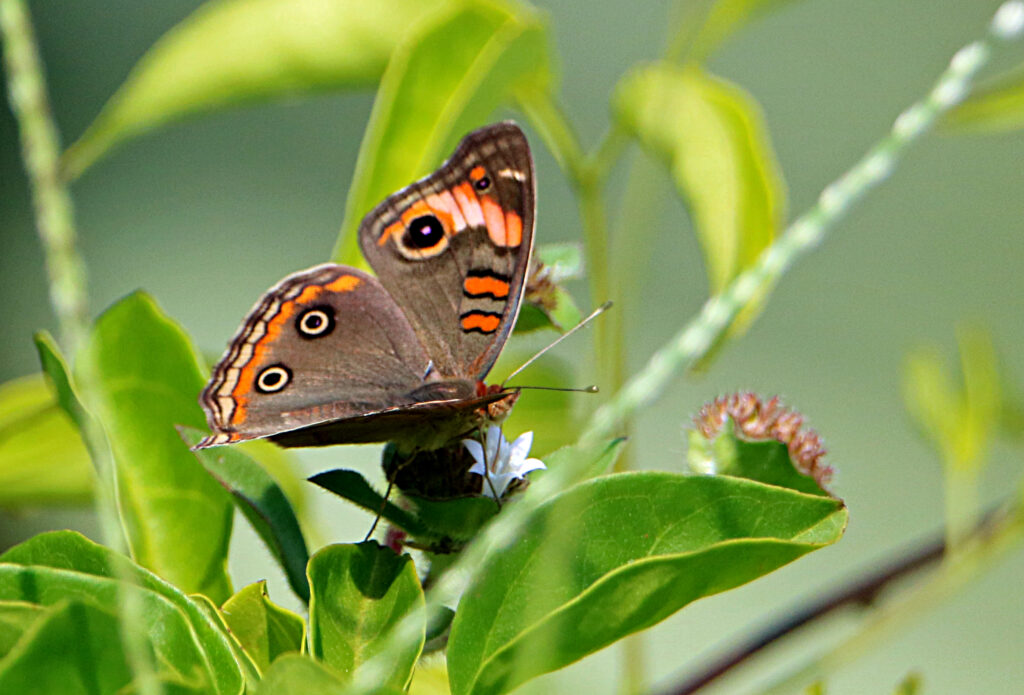
I consider my group of galleries titled Costa Rica TRIPS to be my best group of photo galleries, because they cover my trips to all my favorite nature places all over Costa Rica, now numbering 120 including day trips! Though I share some good photography from home here in Atenas, including my garden, the exciting stuff is usually from the trips! 🙂
And the newest one is from last week’s little 2-night trip to Xandari Resort on the edge of my provincial capital of Alajuela, Alajuela with their surprising private rainforest with waterfalls, all kinds of trees and wildlife, along with their gorgeous gardens near the rooms, restaurant, spa and their farm. A great little jungle island near a big city! This gallery is labeled 2024 June 11-13 — Xandari Resort, Alajuela (linked to the gallery) or you can click the image of the first page of the gallery below to get there . . .
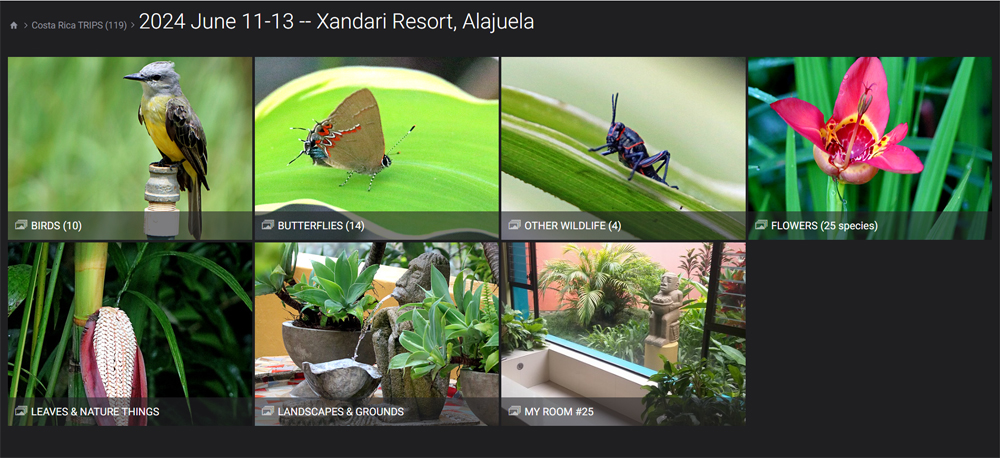
If you are one of my readers in Costa Rica and want to check out Xandari, which has greatly reduced prices during rainy season, go to their website at Xandari Costa Rica! (Pronounced shaun-dar-ie) It is the Costa Rica location of a chain of resorts based in India, all focused on nature and local culture and people.
Now I will start catching up on some blog posts from my garden that I made before Xandari. 🙂 And my next trip is in July to Maquenque Eco Lodge where I’ve photographed more birds than any other location! 🙂 Plus I will celebrate my 84th birthday there! 🙂 Always something to look forward too when you live “Retired in Costa Rica!”
¡Pura Vida!
I said yesterday I had 15 species and I just realized the plain brown top is the top of the Carolina Satyr, meaning I moved those photos in with the Carolina Satyr dropping it to 14 and one unidentified Yellow could possibly be one of the other yellows, so I got either 13 or 14 species of butterflies with I think three new species. Xandari has always been a good place for butterflies for me, both in their forest and in their gardens, my third best place after my own garden and Hotel Banana Azul in the Caribbean! 🙂 Here is one pix for the emailed version of post, followed online by a gallery of all 15 photos . . .
